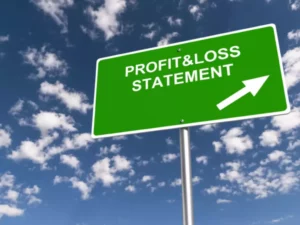Overview
Are you a YouTuber, blogger, social media influencer, Etsy seller, or something along those lines? If yes, then this article is written for you. If you are a new business owner or if you are new to self-employment, you might be looking around for answers to the questions “What is a Schedule C?”. You probably already guessed that this is some kind of tax form, but what is the purpose of this document?
Schedule C is used for anyone who is self-employed, even if it is on a part-time basis, even if it is a side job and you still work a regular job. If you earn $400 or more, the IRS wants you to file the Schedule C. You also do not have to have a business license because it is intended for sole proprietors, DBAs, and even LLC. Of course, you can choose to be taxed as something different, in which case you would be filing a different tax form.
How to file
First, we would like to clear that Schedule C is not a substitute for a tax Form 1040. These are two different forms. While Form 1040 is something most individuals need to file, Schedule C is not. It is completed only in the cases discussed earlier and then attached to the 1040 tax return. Thus, Schedule C can be considered to be part of Form 1040. If you are an independent contractor and get the 1099 form, you are still required to file the Schedule C.
So, to complete this form, you would typically go on one of the tax filing platforms to fill out and submit the Schedule C form, but you can also print it out and mail it or have a hard copy to go over the information you need to complete this form. The programs have a series of questions prepared for you that you answer one after another and the program fills out the form for you based on your answers.
Whether you are doing it online, filling in the printed version, or even turning to a tax professional to help you with your tax returns, there is some information you need to have on hand to be able to do this.
- Your first step would be to gather all your records of your business income.
- You also need to have the receipts and record of your business costs to calculate the cost of the goods you sold or the services you provided. Basically, this would be the amount by which your inventory changed during the year plus any labor costs, materials, and any other supplies.
- You will also need to calculate your other business expenses, such as advertising, insurance, office supplies, phone, internet, wages, etc.
- The next steps would be calculating your gross profit, which is all the money you received from sales less any returns or allowances and minus the cost of goods sold, and net income, which is the amount you will be using on your Form 1040.
- Another item you would need to have calculated is the self-employment taxes. However, if your business ended up reporting a loss, there will be no tax liability from Schedule C.
Knowing which costs and expenses to include and where they go is probably the trickiest part. There are also numerous deductions that you can subtract from the amount you earned, which would help you cut your tax bill. This is where the help of a professional tax preparer or at least a special program will be very valuable.
In addition, if you were using bookkeeping software, you will have a much easier time getting all of this information calculated and put on the Schedule C form. In fact, many programs categorize all the income and expenses keeping this form in mind. This means that you can simply print a profit and loss report generated by the program and use it when doing your taxes.


















